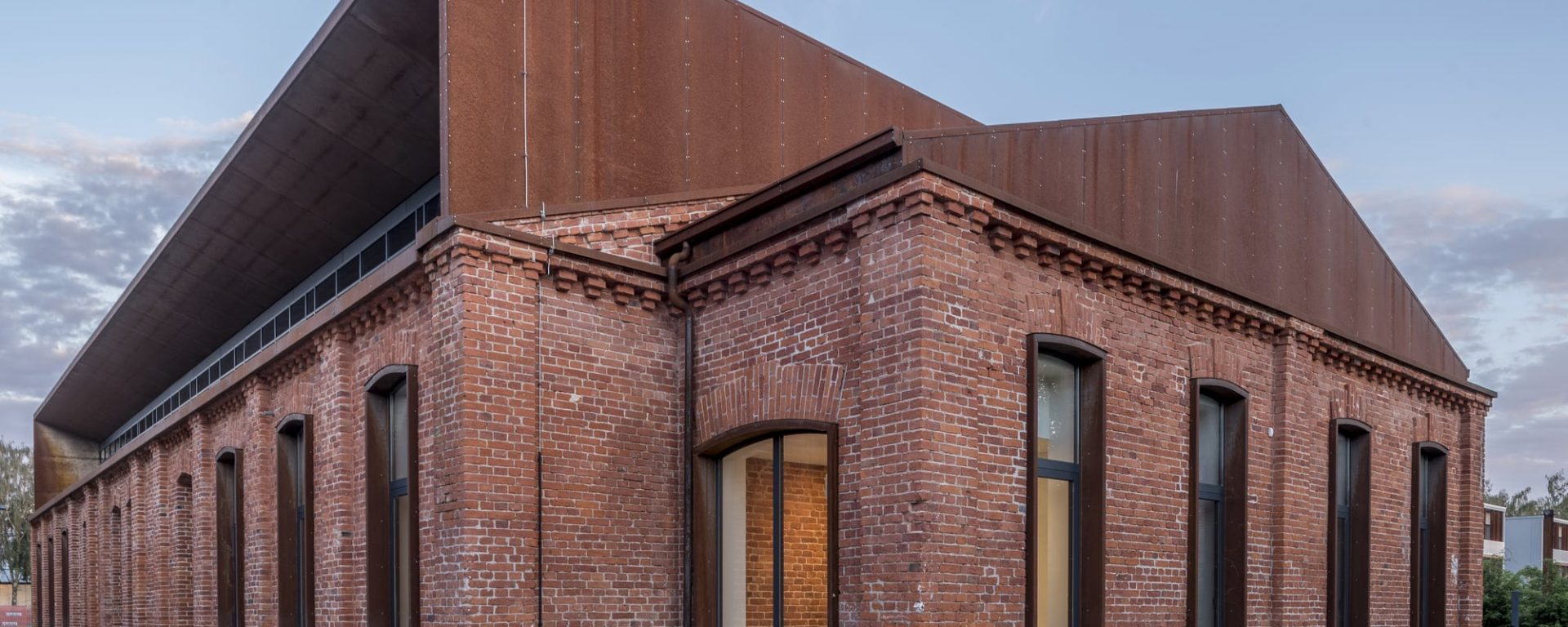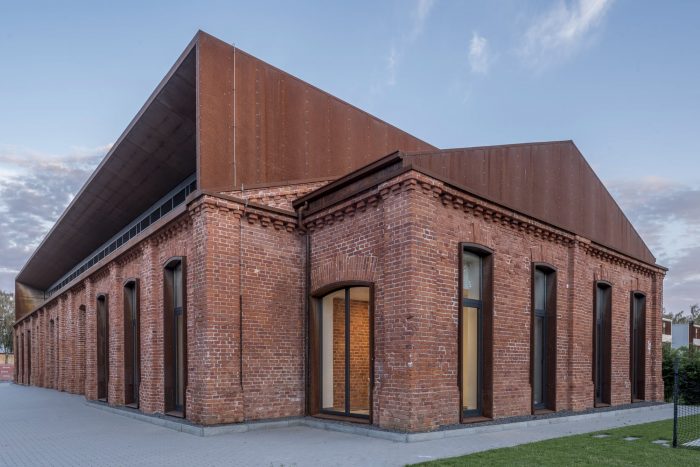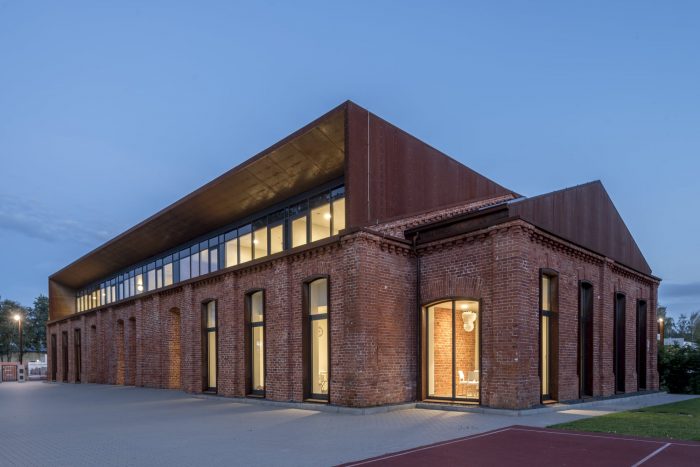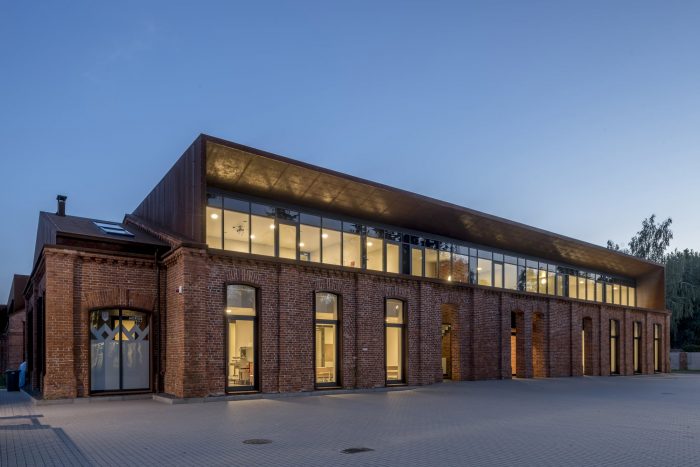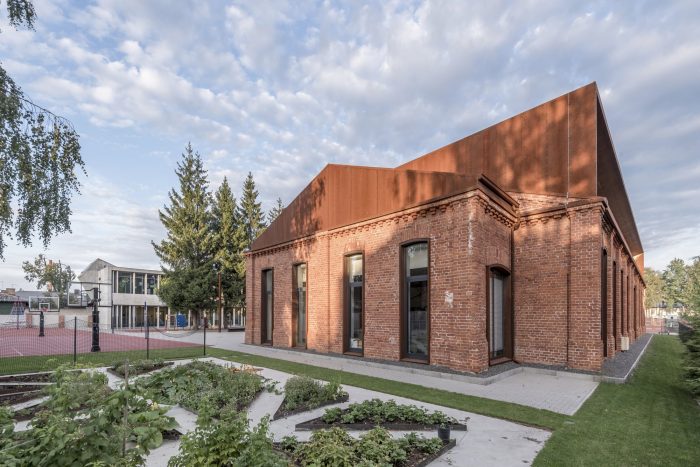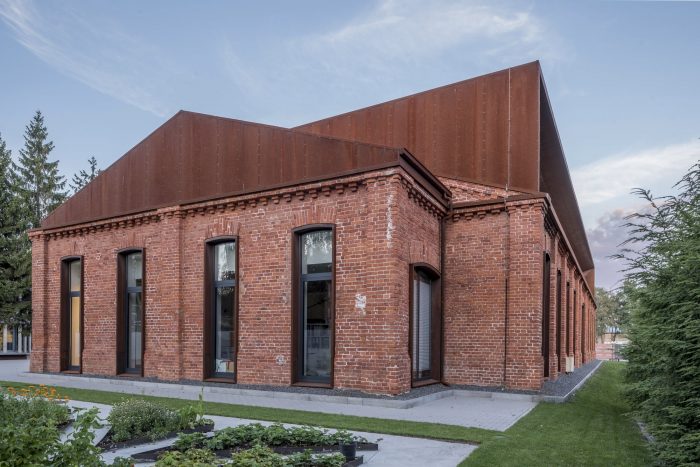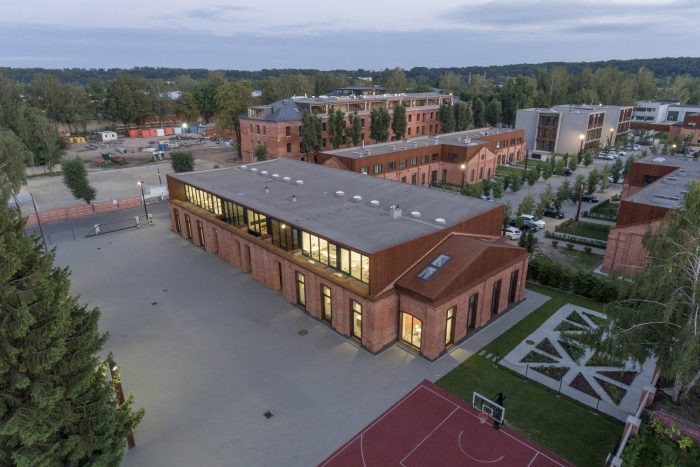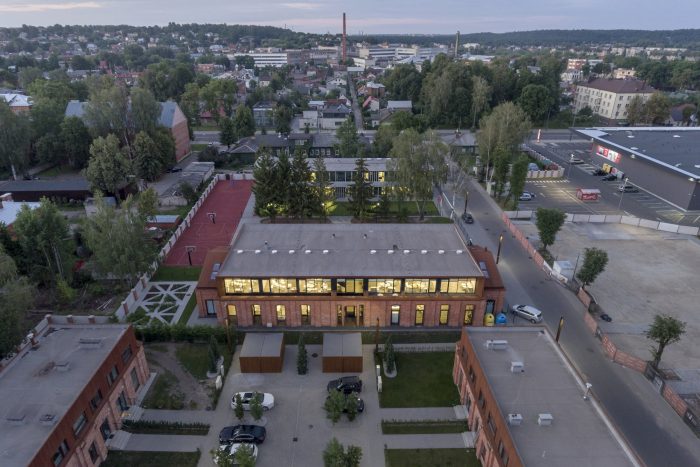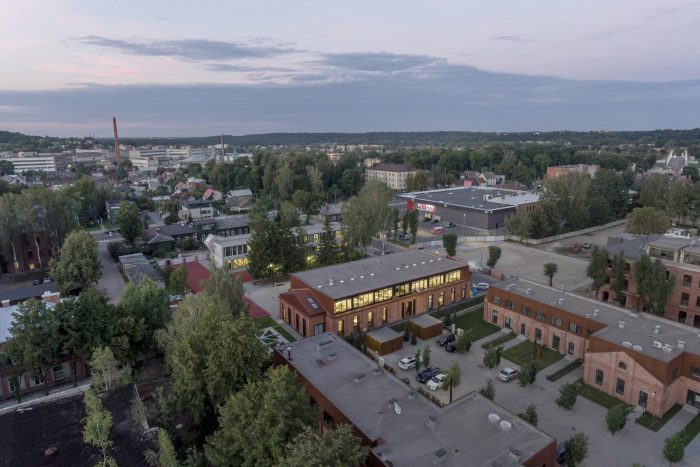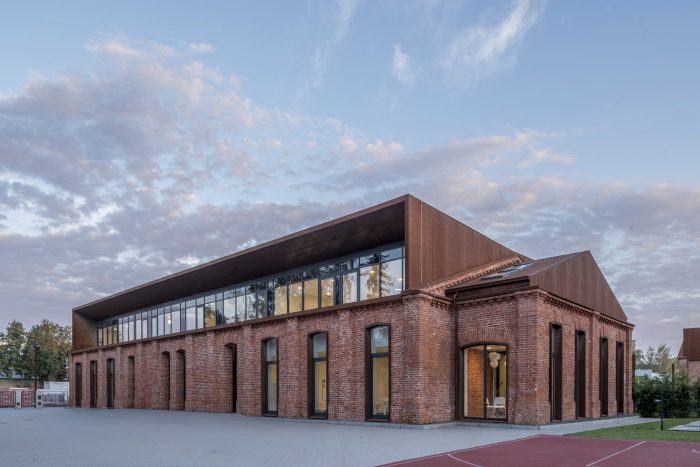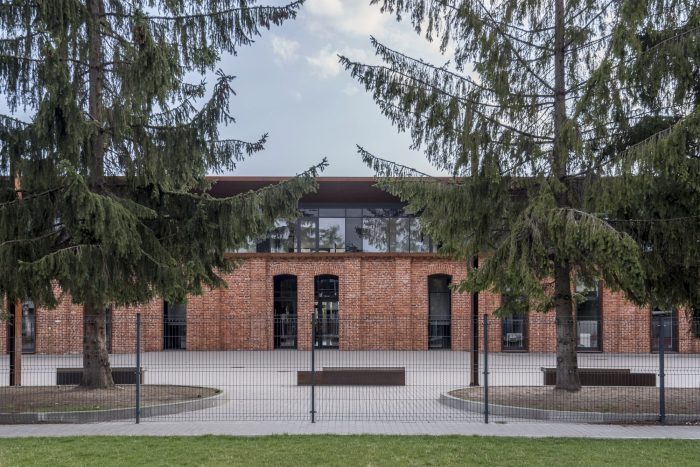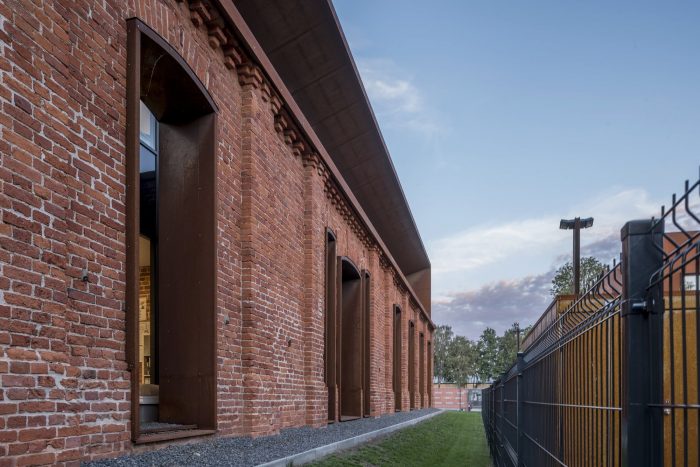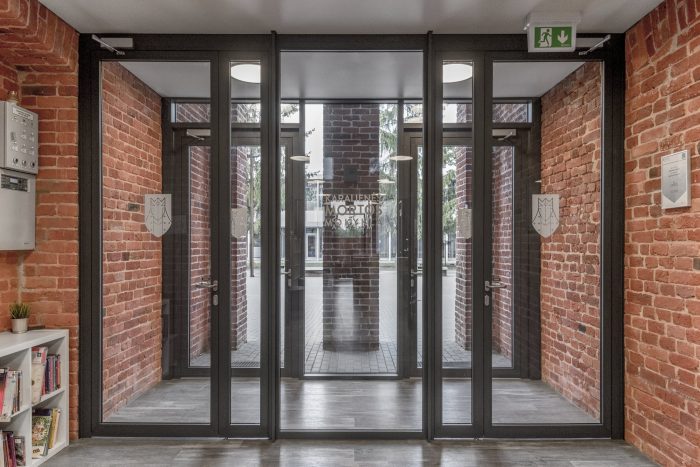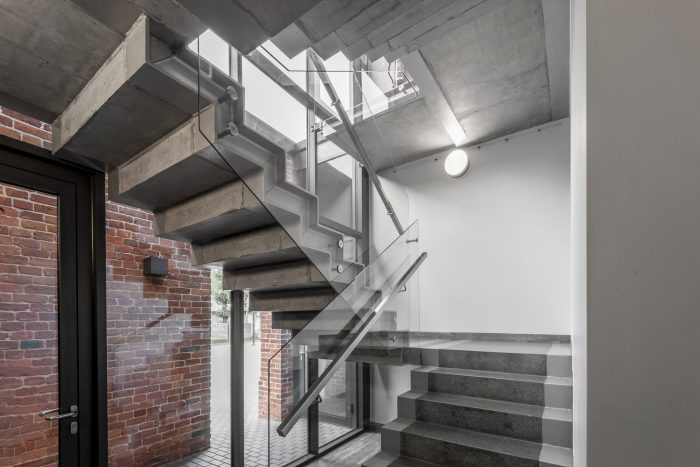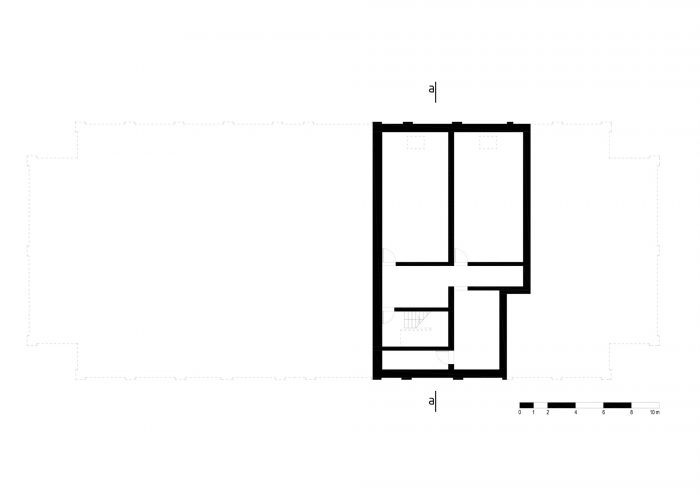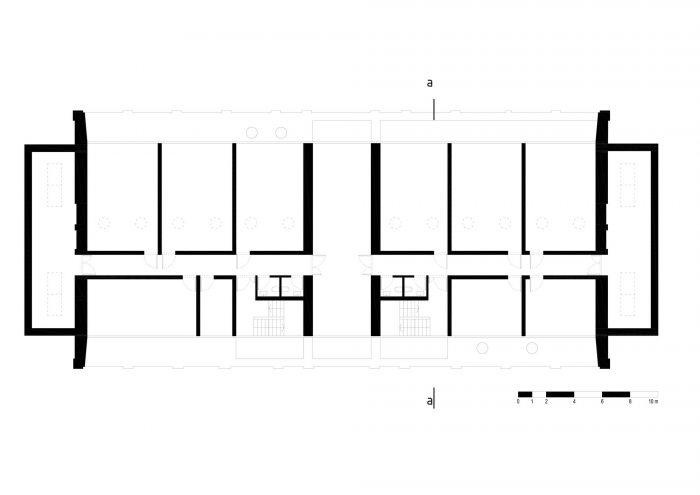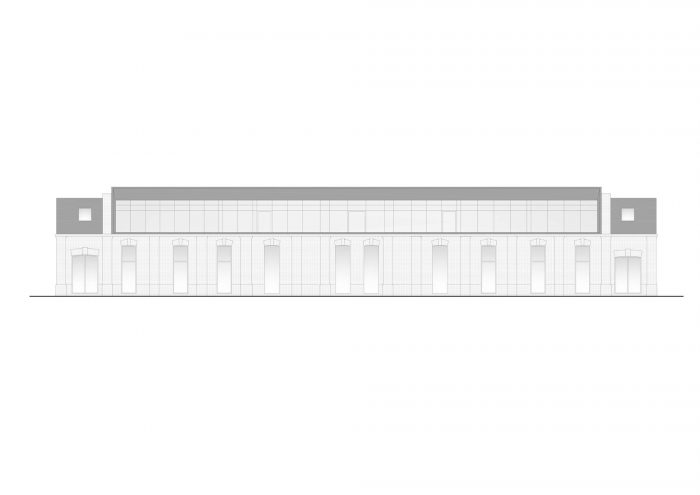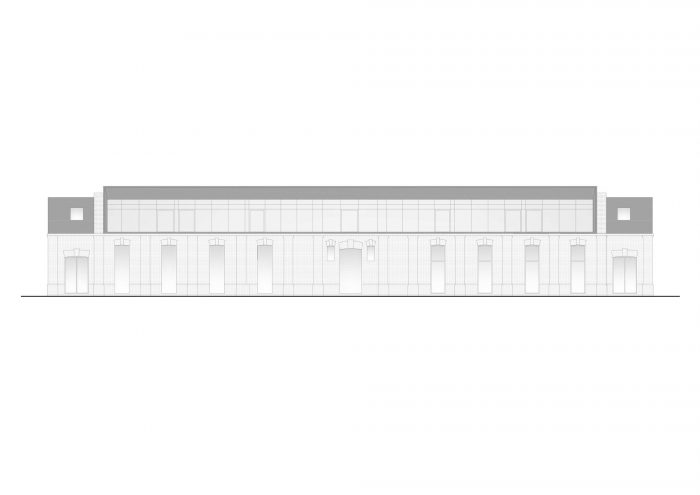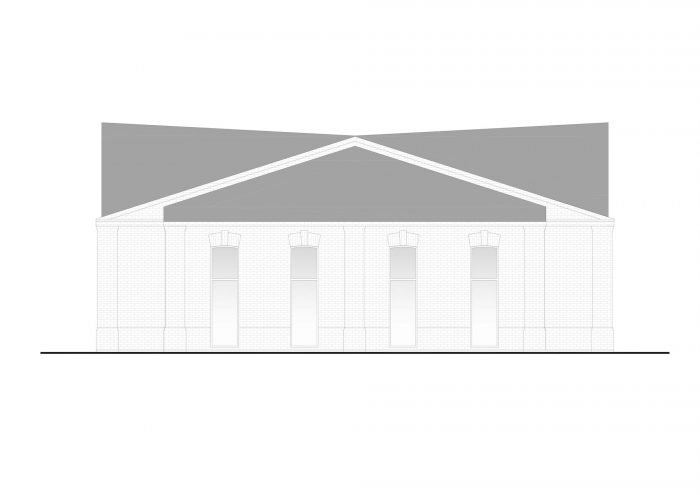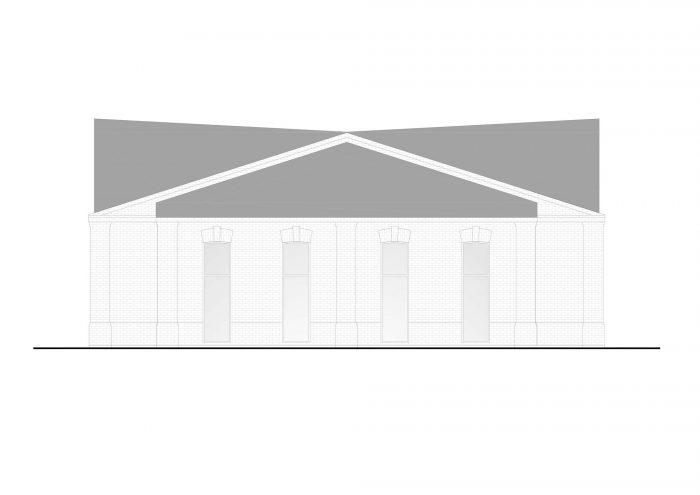建筑师团队被委托实施不可移动的文化价值领土的转换–在Žemieji Šančiai区的历史兵营,开发一个创造性的场所建设,为一个旧的军事区带来活力。建在历史环境中的玛莎女王学校建筑成为了将废弃的军营改造成多功能住宅区的一部分,包括7个住宅、2个商业建筑、一所学校和一所幼儿园。
The team of architects was entrusted with the implementation of the conversion of the territory of the immovable cultural values – the historical barracks in the Žemieji Šančiai district, to develop a creative placemaking, bringing vibrancy to an old military district. Built in a historic environment, Queen Martha’s School building became a part of the transformation of an abandoned barracks into a multifunctional residential area consisting of 7 residential, 2 commercial buildings, a school, and a kindergarten.
2017年项目被授予 “为了可持续发展 “竞赛的主要奖项,在立陶宛房地产开发协会2021年举办的竞赛中,这个军营综合体被选为最佳房地产项目。
Project 2017 was awarded the main prize of the competition “For Sustainable Development”, and in the competition organized by the Lithuanian Real Estate Development Association in 2021, this barracks complex was selected as the best real estate project.
G. Natkevicius & Partners公司实施了对Šančiai兵营的复兴,不仅保留了真实的建筑细节和沙皇建筑的特征元素–真实的砖块装饰、带有 “砖齿 “的窗台装饰、拱门、高天花板、大窗户,而且,正如这位前卫建筑师所特有的,适应建筑创新,使历史建筑以现代方式生活。
G. Natkevicius & Partners implemented the renaissance of Šančiai barracks not only by preserving the authentic architectural details and elements characteristic of tsarist construction – authentic brick decor, window sill decoration with “brick teeth”, arches, high ceilings, large windows, but also, as it is typical for this avant-garde architect, adapted construction innovations, enabling historic buildings to live in a modern way.
玛莎女王学校是一个以前的一层存储文物建筑,在重建后通过容纳第二层而被扩大。新元素的组成强调了现有建筑的架构,突出了它是两个不同历史时期的结合。现代化的屋顶体量与它的平坦性和宽敞的展示柜被覆盖了COR-TEN,一种生锈的金属板涂层。一楼的建筑元素和三岔口的屋顶也是用COR-TEN金属覆盖的。
Queen Martha’s School is a former one-story storage heritage building that was expanded after the reconstruction by accommodating the second floor. The new elements are composed emphasizing the architecture of the existing building, highlighting it as a union of two different historical periods. The modern roof volume with its flatness and spacious showcases is covered with COR-TEN, a rusty metal sheet coating. The architectural elements of the first floor and the roofs of the pediments are covered with COR-TEN metal as well.
为了复活军事重镇的建筑,有必要改变它们所反映的普遍的压抑的军国主义情绪。通过强调和保护幸存的红砖砌体,使其成为外部和内部的一部分,在新的重生建筑中创造了一种历史氛围。
In order to resurrect the buildings of the military town, it was necessary to change the prevailing depressing militaristic mood reflected in them. By emphasizing and preserving the surviving red brick masonry, which has become a part of both the exterior and the interior, a historic mood has been created in the newly reborn building.
将现代建筑的原则用于抚养和教育儿童的目的,强调了历史环境并加强了其相关性。新环境保留了同时看到新旧–现代建筑的机会。这样一来,建筑在保持建筑历史和满足儿童需求的现代空间之间的和谐的同时,不仅直接适应了教育机构的功能,而且还成为年轻一代的教育工具。
The use of the principles of modern architecture for the purposes of raising and educating children has emphasized the historical environment and strengthened its relevance. The new environment preserves the opportunity to see both old and new – modern architecture. In this way, the architecture, while maintaining the harmony between the history of the building and the modern space that meets the needs of children, is not only adapted directly to the function of an educational institution but also becomes an educational tool for the younger generation.
设计的学校建筑的建筑表达和规模保留了考纳斯军事城的主要建筑和城市形成的原则。外墙被重建为真实的外墙,因为在苏联时期建筑被改造成重型机械仓库时,小开口的节奏被破坏了。
The architectural expression and scale of the designed school building preserve the principles of the primary architectural and urban formation of Kaunas military town. The facades were rebuilt into authentic ones, as the rhythm of the small openings was destroyed when the building was converted into a heavy machinery warehouse during the Soviet era.
建筑的平面图是一个规则的长方形,有对称的窗户开口,在两端有较窄的延伸。通过强调现有外墙的厚度和开口,将新墙插入建筑内部,从而形成内部空间,并有可能为新房舍安装现代化的展示台。
The plan of the building is of a regular rectangular shape, with symmetrical window openings and narrower extensions at the ends. By emphasizing the thickness and openings of the existing external walls, the new walls are built by inserting them inside the building, thus forming the internal space and the possibility to install modern showcases for new premises.
教室、学校实验室、小礼堂和家庭场所被设计在第一和第二层。沿着建筑二层的中间形成一条走廊,教室被安排在室外窗户旁边。保持前军事城镇的原则,在建筑前面形成了一个儿童休闲的空间。
Classrooms, school laboratories, small halls & domestic premises are designed on the first and second floors. A corridor is formed along the middle of the second floor of the building, and the classrooms are arranged next to the outdoor windows. Maintaining the principle of a former military town, a space for children’s leisure time has been formed in front of the building.
Architects: Architectural Bureau G.Natkevicius & Partners
Area : 1182 m²
Year : 2021
Photographs :Lukas Mykolaitis
Lead Architects : Eglė Savodnikaitė, Adomas Rimšelis, Gintautas Natkevičius
City : Kaunas
Country : Lithuania

